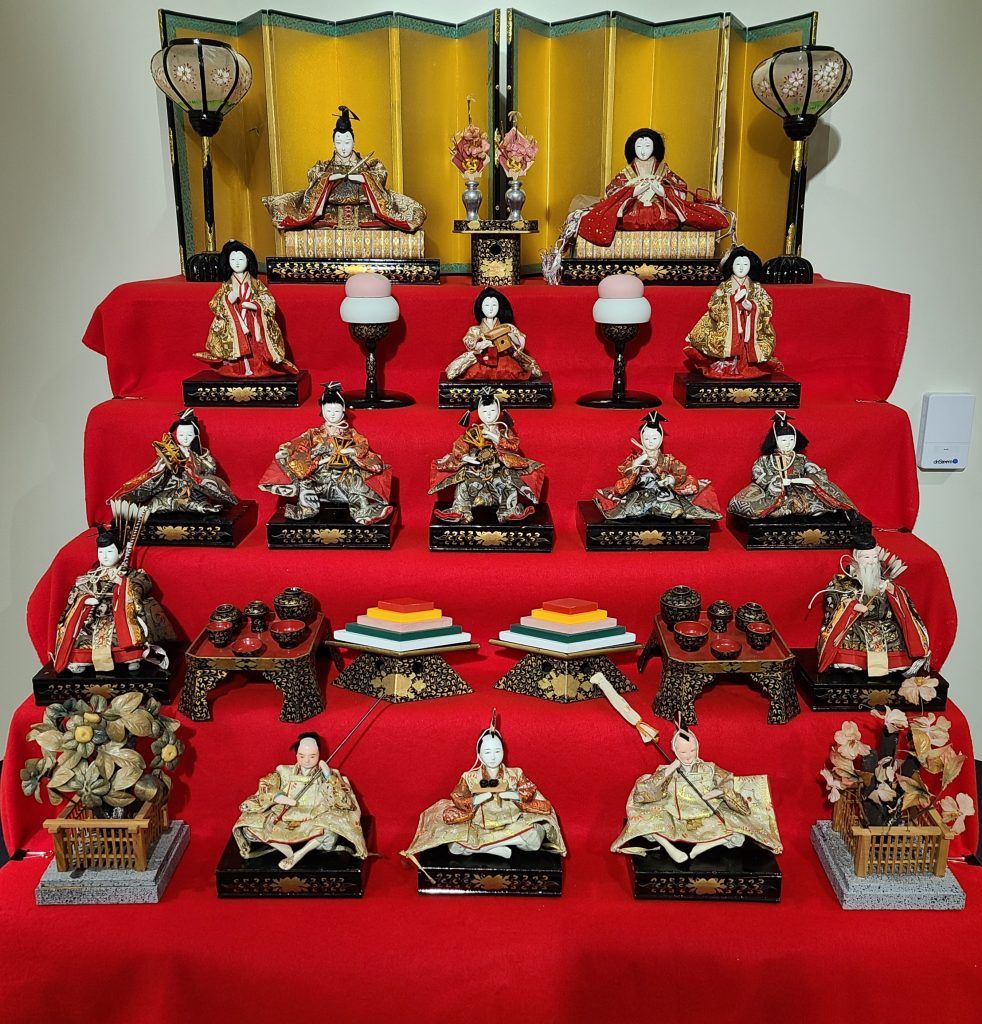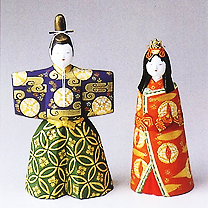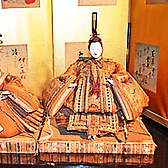Modern Kokin-Bina Dolls

Hara Shugetsu, a doll-maker in Edo (Tokyo), developed the Kokin-bina style during the Meiwa Era (1764-1772 CE). The style’s name comes from the Kokinshu, a Heian Period poetry anthology. Kokin-bina draws from several earlier doll styles. The Emperor doll usually wears a simple black ho, emulating the courtly style of the Yusoku-bina. The Empress doll is more like the Kyoho-bina style, as she typically wears an elaborate junihitoe, the twelve-layered court costume of the Heian Period, as well as a crown styled into a mythical phoenix. These inspirations show how doll-makers balanced competing tastes by pairing the austere formality of the Yusoku-bina with the elaborate textiles of the Kyoho-bina.
An important difference between the Kokin-bina and earlier doll styles was how they were manufactured. As the popularity of the Hinamatsuri festival increased, doll-making was divided into different specialties. Carefully sculpted heads were fashioned at a workshop in Edo and the simpler bodies, hidden under clothes, were mass-produced in Kyoto. The extra care given to the heads allowed for other innovations, such as the extensive use of inset glass for the dolls’ eyes. Once complete, the heads were shipped to Kyoto where they were painted, matched with a body, and dressed.
This manufacturing method allowed doll-makers to keep up with the growing demand for dolls to celebrate Hinamatsuri. The Kokin-bina style was popular among merchants and aristocrats alike. These dolls gradually replaced the earlier styles at all levels of society, and eventually developed their own variants. The Kokin-bina and related styles remain the most popular today.



